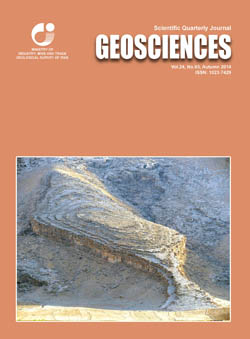Document Type : Original Research Paper
Authors
1 Ph.D. Student, Department of Geology, Tarbiat Modares University, Tehran, Iran
2 Associate Professor, Department of Geology, Tarbiat Modares University, Tehran, Iran
Abstract
Iron oxide - apatite deposits are one of the most important REE resources that occurred in the Posht-e-Badam and Zanjan regions of Iran. REE mineralization in the Zanjan region is associated with Sorkhe Dizaj, Aliabad, Morvarid, Zaker, Oskand and Golestanabad iron oxide-apatite mineralization. The deposits are located in the Tarom area, which is a part of western Alborz - Azarbaijan zone. The Eocene volcanic sequences such as olivine basalt, trachyandesite, andesite as well as volcanoclastic rocks are the main units in the area which are intruded by the late Eocene plutonic rocks. Plutonic rocks in the region include porphyric micro-quartzdiorite and quartz-monzonite to quartz-monzodiorite. Magnetite-apatite mineralization in the Zanjan region is related to quartz-monzonitic to quartz-monzodioritic rocks. The mineralization is observed in the form of vein and stockwork (irregular veins and veinlets of magnetite-apatite). In the Tarom magnetite-apatite deposits, apatite crystals are associated with magnetite some of which have sizes up to 20 cm. Monazite is the main REE-bearing mineral at these deposits occurring as inclusion in the apatite. The apatite minerals contain 0.4-1.6 wt% REE, and have an REE distribution pattern with a strange LREE/HREE enrichment. The results of this research indicate that the iron oxide - apatite mineralization in the Zanjan region is formed by a quartz-monzonitic magma with calk-alkaline affinity, which occurred in a magmatic arc setting. This research shows that the magnetite - apatite mineralization in the Zanjan region is an important REE concentration in Iran.
Keywords

